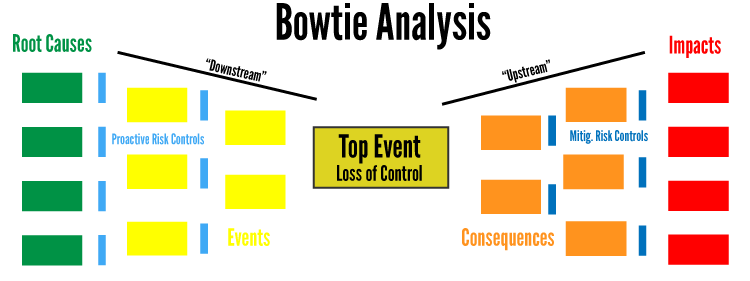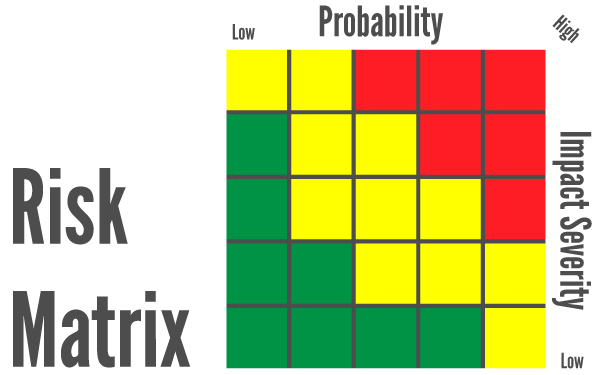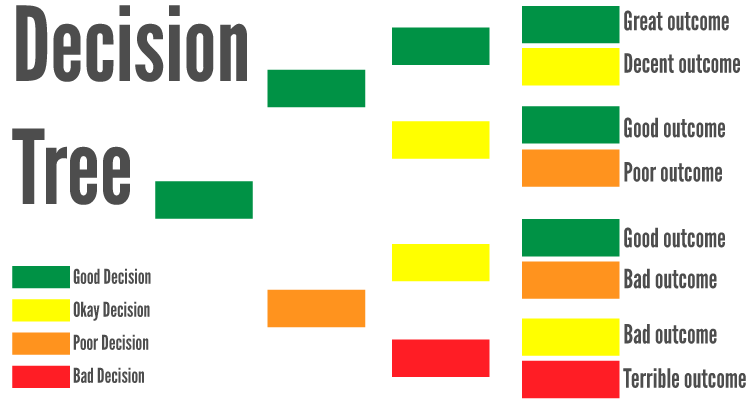What Are the 3 Best Aviation SMS Risk Management Tools?

Aviation safety management systems (SMS) have many required components that must be monitored and documented regularly. Much of this gathered data assists in enhancing operational processes by providing managers with actionable, decision-making value.
To assist with this onerous task, aviation SMS risk management tools are fantastic additions to every SMS repertoire – if you use them. Their "baked-in" risk management processes assure upper management that your aviation SMS has repeatable processes for the best risk management results. Furthermore, these risk management processes are used by many aviation service providers, thereby providing higher levels of confidence in your organization's safety risk management (SRM) and safety assurance (SA) processes.
I’m often surprised at how many operations all but neglect "risk management tools in favor of simply going through the motions of managing their SMS using rudimentary aviation SMS tools, such as spreadsheets.
Related Aviation SMS Software Articles
- 21 Benefits of Risk Management Software
- How to Choose the Best Aviation Safety Database Software
- Spreadsheets vs Software for Aviation Safety Management
The difference between "risk management tools" and "SMS tools" is that SMS tools simply help you interact with the bureaucratic elements of your SMS documentation requirements – such as
- safety reporting system;
- issue management and accident investigation system;
- hazard and risk register;
- SMS training documentation;
- auditing tools, etc.
Aviation risk management tools are specifically designed to assess and manage risk in the aviation environment, and the performing elements that affect it.
The three most widely used tools are:
- Bowtie Analysis;
- Risk Matrix; and
- Decision Trees.
Each tool has its strengths and benefits for different organizations and different situations. While it’s tempting to advise using all 3 tools in different situations, this can very quickly spiral out of control and lead to confusion and inconsistency.
A better practice is to adopt one of these risk management tools to be used ubiquitously in your SMS risk management processes based on which tool best fits your most common needs. You can also use another tool sparingly in very specific situations. The challenge always leads us to question: "Which tool is best in each particular situation?"
Here are the pros and cons of the three best aviation SMS risk management tools in safety programs.
Pros and Cons of Bowtie Analysis
I am a major fan of Bowtie Analysis for risk management.
Bowtie Analysis is a tool that attempts to create a flow chart of a "top event" from Root Causes through Impacts, and, depending on how detailed the Bowtie model is, will also include each event, risk control, and consequence along the way.
It is called the bowtie because any safety situation starts with numerous Root Cause threats, that align together through several events that funnel “downstream” (because of poor proactive risk controls) to the Top Event, which is the point at which loss of control occurs. From the Top Event, consequences unfurl “upstream” (because of poor mitigation risk controls) to numerous Impacts.

The Pros of Bowtie Analysis:
- Extremely thorough analysis of all elements involved in the safety issue (such as decisions, controls, threats, etc.) that visually allows you to digest the whole situation in one easy picture;
- A fantastic way to understand, visualize, and evaluate the effectiveness of your risk controls;
- Is easy to understand and summarizes the entire situation in a visual chart, whereas a report might take pages to get the same information across; and
The Two Major Cons of Bowtie Analysis:
- It takes skill and a thorough understanding of root causes, cause-effect analysis, and how all variables work together to produce outcomes; and
- Requires thoughtfulness and is prone to being flawed if great care is not taken during analysis.
When to Use Bowtie Analysis:
- Hypothetical scenarios, such as safety case, preventative analysis, or Management Of Change projects;
- Risk control analysis during incident investigations; and
- Teach stakeholders what risk management is.
Related Articles on Bowtie Analysis in Aviation SMS
- What, Why, and How to Use Bowtie Analysis in Aviation SMS
- How to Do Bowtie Analysis in Aviation SMS – 5 Step Walkthrough
- 4 Best Uses of Bowtie Method in SMS Risk Management – Do You Use Them?
Pros and Cons of the Risk Matrix

The Risk Matrix is perhaps the most ubiquitous and definitely the most simple of the aviation SMS risk management tools. This risk management tool is designed to take a 32,000-foot overview of the issue and combine the exposure (i.e., "likelihood" or "probability") of this event happening with the severity of impact to create a core portrait of operational risk.
It’s somewhat related to Bowtie analysis in that you can read “green” risk as being associated with proactive issues, “yellow” issues as being associated with issues that were mitigated around a Top Event, and “red” issues as being associated with issues that have impending impacts.
Pros of the Risk Matrix:
- Extremely quick to do and summarizes the two most important elements of any issue (is it going to happen again, and how bad is it going to be?) into a single variable, called a risk index;
- Doesn’t require particular acumen to use – i.e. anybody can use it; and
- Offers a numerical assessment – i.e. qualitative assessment of an issue – which is great for data mining and statistical comparisons.
The Main Cons of the Risk Matrix:
- Often the items "exposure" and “severity” are confused or misunderstood;
- Is a subjective interpretation; and
- Doesn’t offer much depth when not paired with a justification statement.
When to Use the Risk Matrix:
- On initial and closing risk assessments to get an overall picture of how effective CPAs were in fixing the safety issue; and
- During issue review to create a historical log that an issue/hazard’s risk does not increase slowly over time.
Related Articles on Risk Matrix in Aviation SMS
- What Is a Risk Matrix and Risk Assessment in Aviation SMS
- How to Create Your Risk Matrix for Risk Assessments in Aviation SMS
- How to Define Severity and Likelihood Criteria on Your Risk Matrix
Pros and Cons of the Decision Tree
Decision trees are probably the least used aviation SMS risk management tool of the three but have some great uses that the other two tools simply can’t rival.
A decision tree, essentially, focuses exclusively on how human decision-making affects the outcomes of a safety issue. Organizations that uphold the Pragmatist Risk attitude are most concerned with creating an adaptable safety culture – which is based on quality human decision-making.
The decision tree is exactly what it sounds like – a tree of polar decisions that eventually leads to a set of outcomes, both positive and negative.
See the chart below:

Pros of the Decision Tree Are:
- Great educational tool for employees to see how their actions and decisions influence(d) a situation;
- Extremely useful as a Human Factors analysis in a situation; and
- Powerful way for managers to decide how culpable an employee is after a safety incident.
Cons of the Decision Tree Are:
- Can quickly become nebulous if each point in the decision tree doesn’t take very small “decision steps”; and
- Is slightly pigeon-holed into the human element of incidents, and it’s hard to account for other elements.
When to Use the Decision Tree:
- In SMS programs and/or incidents where decision-making plays an inordinate import role in the outcome.
Related Aviation Risk Management Articles
- Difference Between Reactive, Predictive and Proactive Risk Management in Aviation SMS
- What Is the Process of Risk Management in Aviation SMS
- 4 Elements of Safety Risk Management (SRM)
Final Thoughts on Choosing Risk Management Tools in Aviation SMS
Early in an aviation SMS implementation, safety managers are not sophisticated "risk managers." Initially, they are concerned with "checking the SMS compliance box" and improving their safety cultures.
As the years pass, SMS is "just the way business is done." Your SMS matures and risk management strategies become more sophisticated. Upper management begins to have expectations that the SMS should be a profit driver and not simply a hole to dump limited resources.
As upper management pressures safety managers for better, more meaningful reports to base their decisions on, safety managers realize their historic SMS data management strategies lack functionality and are unable to deliver satisfactory decision-making value. This "higher bar" placed before the safety manager motivates the search for better risk management tools.
Which tools do you use today? If you are the safety manager, you probably use the risk matrix at least weekly. Many of you also use the Bowtie. Another one not mentioned is the Fishbone diagram. Which is your favorite, all-around tool?
Do you need the best aviation risk management tools? Since 2007, SMS Pro has been providing aviation SMS database services to operators around the world. Check out these short videos to learn how we can help your risk management activities offer value to your organization.
Or do you simply need to evaluate your company's risk management processes?
Last updated in September 2025.






